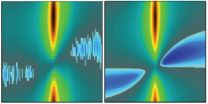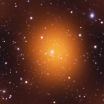(Press-News.org) Neighbourhood income deprivation has a strong negative effect on altruistic behaviour when measured by a 'lost letter' experiment, according to new UCL research published today in PLOS ONE.
Researchers from UCL Anthropology used the lost letter technique to measure altruism across 20 London neighbourhoods by dropping 300 letters on the pavement and recording whether they arrived at their destination. The stamped letters were addressed by hand to a study author's home address with a gender neutral name, and were dropped face-up and during rain free weekdays.
The results show a strong negative effect of neighbourhood income deprivation on altruistic behaviour, with an average of 87% of letters dropped in the wealthier neighbourhoods being returned compared to only an average 37% return rate in poorer neighbourhoods.
Co-author Jo Holland said: "This is the first large scale study investigating cooperation in an urban environment using the lost letter technique. This technique, first used in the 1960s by the American social psychologist Stanley Milgram, remains one of the best ways of measuring truly altruistic behaviour, as returning the letter doesn't benefit that person and actually incurs the small hassle of taking the letter to a post box.
Co-author Professor Ruth Mace added: "Our study attempts to understand how the socio-economic characteristics of a neighbourhood affect the likelihood of people in a neighbourhood acting altruistically towards a stranger. The results show a clear trend, with letters dropped in the poorest neighbourhoods having 91% lower odds of being returned than letters dropped in the wealthiest neighbourhoods. This suggests that those living in poor neighbourhoods are less inclined to behave altruistically toward their neighbours."
As well as measuring the number of letters returned, the researchers also looked at how other neighbourhood characteristics may help to explain the variation in altruistic behaviour – including ethnic composition and population density – but did not find them to be good predictors of lost letter return.
Corresponding author Antonio Silva said: "The fact that ethnic composition does not play a role on the likelihood of a letter being returned is particularly interesting, as other studies have suggested that ethnic mixing negatively affects social cohesion, but in our sampled London neighbourhoods this does not appear to be true.
"The level of altruism observed in a population is likely to vary according to its context. Our hypothesis that area level socio-economic characteristics could determine the levels of altruism found in individuals living in an area is confirmed by our results. Our overall findings replicate and expand on previous studies which use similar methodology.
"We show in this study that individuals living in poor neighbourhoods are less altruistic than individuals in wealthier neighbourhoods. However, the effect of income deprivation may be confounded by crime, as the poorer neighbourhoods tend to have higher rates crime which may lead to people in those neighbourhoods being generally more suspicious and therefore less likely to pick up a lost letter.
"Further research should focus on attempting to disentangle these two factors, possibly by comparing equally deprived neighbourhoods with different levels of crime. Although this study uses only one measure of altruism and therefore we should be careful in interpreting these findings, it does give us an interesting perspective on altruism in an urban context and provides a sound experimental model on which to base future studies."
###
Notes for Editors
1. For more information, please contact Ruth Howells in the UCL Media Relations Office on tel: +44 (0)20 3108 3845, mobile: +44 (0)7990 675947, out of hours +44 (0)7917 271 364, e-mail: ruth.howells@ucl.ac.uk
2. 'Lost Letter Measure of Variation in Altruistic Behaviour in 20 Neighbourhoods' is published in the open access journal PLOS ONE online ahead of print embargoed until 21.00 UK time (17.00 US Eastern), Wednesday 15 August 2012. Journalists can obtain advance copies of the paper by contacting the UCL Media Relations Office. After the embargo lifts the paper will be available here: http://dx.plos.org/10.1371/journal.pone.0043294
3. The study was funded by the European Research Council and the Foundation of Science and Technology (Portugal).
4. The study was carried out by Jo Holland, Antonio S. Silva and Professor Ruth Mace (UCL Anthropology).
5. The 20 neighbourhoods surveyed were East Sheen, Bromley 1, Bromley 2, Merton, Pinner, Sutton West, Wimbledon, Sutton Clockhouse, Barnet, East Acton, Greenwich, Lavender, Canning, Hoxton, Shadwell 2, Shadwell 1, Blackwall, East India, Limehouse and St. Dunstans.
About UCL (University College London)
Founded in 1826, UCL was the first English university established after Oxford and Cambridge, the first to admit students regardless of race, class, religion or gender, and the first to provide systematic teaching of law, architecture and medicine. We are among the world's top universities, as reflected by performance in a range of international rankings and tables. UCL currently has 24,000 students from almost 140 countries, and more than 9,500 employees. Our annual income is over £800 million.
www.ucl.ac.uk | Follow us on Twitter @uclnews
END
CAMBRIDGE, MA -- By sequencing cancer-cell genomes, scientists have discovered vast numbers of genes that are mutated, deleted or copied in cancer cells. This treasure trove is a boon for researchers seeking new drug targets, but it is nearly impossible to test them all in a timely fashion.
To help speed up the process, MIT researchers have developed RNA-delivering nanoparticles that allow for rapid screening of new drug targets in mice. In their first mouse study, done with researchers at Dana-Farber Cancer Institute and the Broad Institute, they showed that nanoparticles ...
According to a NOAA-led paper published today in the journal Conservation Biology, high levels of background noise, mainly due to ships, have reduced the ability of critically endangered North Atlantic right whales to communicate with each other by about two-thirds.
From 2007 until 2010, scientists from Stellwagen Bank National Marine Sanctuary, Cornell Lab of Ornithology, NOAA Fisheries Northeast Fisheries Science Center, and Marine Acoustics Inc. used an array of acoustic recorders to monitor noise levels, measure levels of sound associated with vessels, and to record ...
VIDEO:
This video shows the annual cycle of global and Asian fatal landslides (for the full dataset described in the research paper).
They have been divided into the 52 weeks...
Click here for more information.
Landslides kill ten times more people across the world than was previously thought, according to research by Durham University, UK.
A new database of hazards shows that 32,300 people died in landslides between 2004 and 2010. Previous estimates ranged from 3,000 ...
WASHINGTON — A new report from the National Research Council presents a prioritized program of basic and applied research for 2013-2022 that will advance scientific understanding of the sun, sun-Earth connections and the origins of "space weather," and the sun's interactions with other bodies in the solar system. This second decadal survey in solar and space physics -- the product of a 18-month effort by more than 85 solar and space physicists and space system engineers -- lays out four scientific goals for the next 10 years along with guiding principles and recommended ...
VIDEO:
This animation shows how large numbers of stars form in the Phoenix Cluster. It begins by showing several galaxies in the cluster and hot gas (in red). This hot gas...
Click here for more information.
Astronomers have found an extraordinary galaxy cluster, one of the largest objects in the universe, that is breaking several important cosmic records. Observations of the Phoenix cluster with NASA's Chandra X-ray Observatory, the National Science Foundation's South ...
A new study by researchers at the University of California, San Diego, and Emory University has uncovered fundamental details about the hexamer structures that make up the tiniest droplets of water, the key component of life – and one that scientists still don't fully understand.
The research, recently published in The Journal of the American Chemical Society (JACS), provides a new interpretation for experimental measurements as well as a vital test for future studies of our most precious resource. Moreover, understanding the properties of water at the molecular level ...
A massive galaxy cluster nearly six billion light years from Earth has been discovered with an astounding and unexpected burst of star formation – more prodigious than any galaxy cluster yet observed, an international team of astronomers and NASA announced today.
In a wide-ranging discussion on the eve of the announcement, two of the leading astronomers on the project talked about the record-breaking galaxy cluster, called Phoenix, and how its surprising properties are prompting astronomers to re-think how galaxy clusters – among the largest structures in the universe ...
A long-time staple of science fiction is the tractor beam, a technology in which light is used to move massive objects – recall the tractor beam in the movie Star Wars that captured the Millennium Falcon and pulled it into the Death Star. While tractor beams of this sort remain science fiction, beams of light today are being used to mechanically manipulate atoms or tiny glass beads, with rapid progress being made to control increasingly larger objects. Those who see major roles for optomechanical systems in a host of future technologies will take heart in the latest results ...
JUPITER, FL, August 15, 2012 – Working with a national team of researchers, a scientist from the Florida campus of The Scripps Research Institute has shown for the first time a link between low levels of a specific hormone and increased risk of metabolic disease in humans.
The study, published online ahead of print in The Journal of Clinical Endocrinology & Metabolism, focuses on the hormone adropin, which was previously identified by Scripps Research Associate Professor Andrew Butler's laboratory during an investigation of obese and insulin-resistant mice. Adropin is ...
Astronomers have found an extraordinary galaxy cluster — one of the largest objects in the universe — that is breaking several important cosmic records. The discovery of this cluster, known as the Phoenix Cluster, made with the National Science Foundation's South Pole Telescope, may force astronomers to rethink how these colossal structures, and the galaxies that inhabit them, evolve.
Follow-up observations made in ultraviolet, optical and infrared wavelengths show that stars are forming in this object at the highest rate ever seen in the middle of a galaxy cluster. The ...




